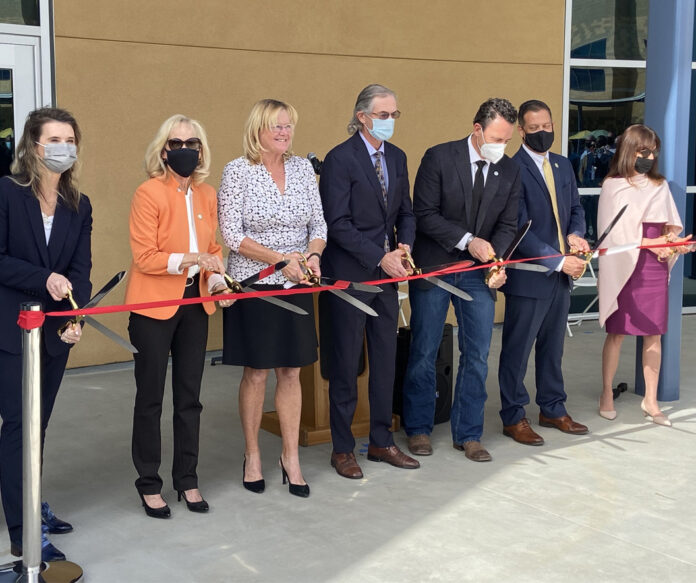The county of San Diego held the grand opening of its new Youth Transitional Campus in Kearney Mesa on Jan. 28. This new facility is a reimagination of the future of juvenile detention, designed to be less like outdated correctional facilities, and designed to promote positive youth development and staff wellbeing. The design of the facility and the operating approach follows the Youth in Custody Practice Model designed by national experts from Georgetown University’s Center for Juvenile Justice Reform and the Council of Juvenile Justice Administrators.
The Campus was transformed from its 1950s-era facility and built across 12 acres for youth 13 – 20 years old. Eight housing units that accommodate 96 beds are organized along an arching tree-lined pathway with an open courtyard that includes basketball courts, handball courts, garden space and an amphitheater and stage. Along the other side of the courtyard is the main large visitation and dining building that includes a state-of-the-art culinary art working kitchen, and a standalone school complex with a career technical education building, and an indoor gymnasium. The residential living units have high wood beam ceilings, large open areas with home-like finishes, and mental health clinicians in each unit. The next phase of construction, set to begin in the spring and will include a 72-bed Temporary Residential Placement Facility, previously known as Juvenile Hall, and a small office building to support Probation staff and families.
Youth Development and Community Support Services Division Executive Deputy Chief Probation Officer Scott Huizar has been doing probation work in the county for the past 27 years, with most of his career focused on youth. He said they have had an outdated correctional facility in San Diego, with the old Juvenile Hall built in the 1950s. He said over the course of the past six to seven years, their vision was to develop a state-of-the-art facility to align with National Best Practices.
Huizar said the facility has eight housing dorms, with each dorm containing 12 beds. He said this also includes a supervisor’s office, a clinician’s office for behavioral health, unlike in the past, so youth can have private in-house services. He said in addition, there is a picnic outside area, patio area, two designated seating areas for youth, updated classrooms, laundry facilities in each dorm so the youth have the ability and responsibility to do their own laundry. He said the educational campus is the heart of the facility and that they new gym would rival any high school gym.














